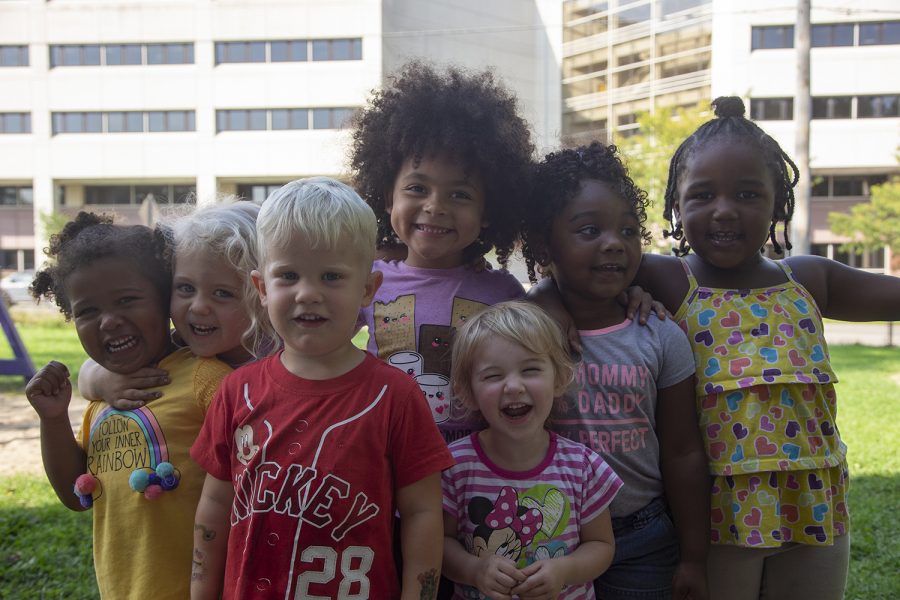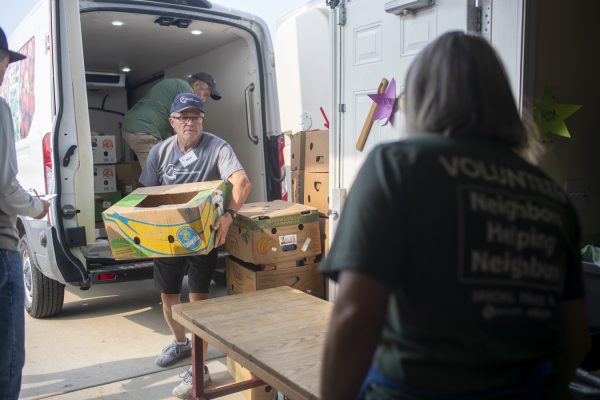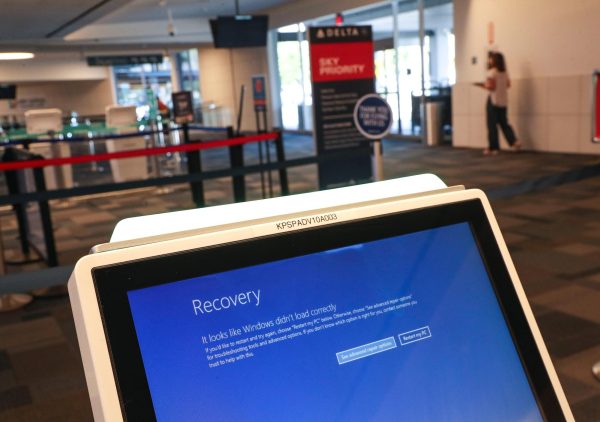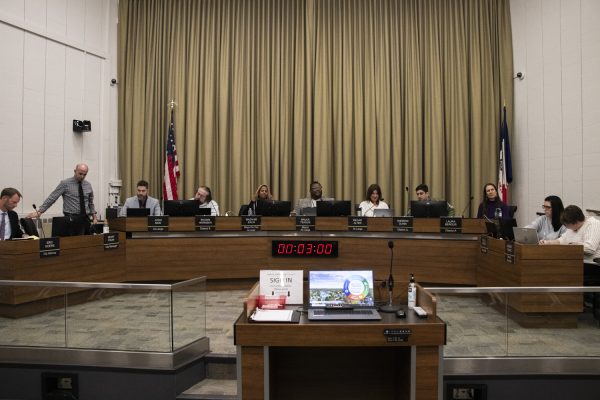Melrose Daycare struggles to serve growing demand for infant care in Iowa City
While Melrose Daycare has been making efforts to open a much-needed infant care center in Iowa City, the business is facing financial obstacles — which reflects a statewide trend.
Children pose for their picture at Melrose Day Care Center on Monday Sept. 30, 2019. The child care center hopes to have infant care in a building near campus, but are facing financial setbacks.
October 8, 2019
Some local households struggle to afford basic expenses, and finding affordable infant care can prove to be both a necessity and a challenge. Melrose Daycare in Iowa City is striving to alleviate that burden.
While the daycare was initially licensed to care only for children ages 2 to 5, Melrose recently made plans to open an infant-care center next to its current building. With this new building, Melrose Daycare hopes to fill a gap in infant care that Amanda Lower, co-director for the organization, said is growing.
“We’ve always had inquiries [for infants], but the calls have been more frequent,” she said. “Almost every week — sometimes a couple times a week — I’ll get calls.”
According to the Iowa Women’s Foundation, Johnson County lost 26 percent of its child-care programs within the last five years. Currently, there are 31 child-care centers in Iowa City, and 16 accept infants. Infant care makes up the largest percentage of child-care requests in Johnson County at 30 percent, leaving a gap between the need for infant care and that provided.
If Melrose opened its second building, the additional space would allow for 12 more infants, Lower said. Child-care assistance from the government would pay for the extra dozen spots so parents don’t have to — which Lower said is a rarity elsewhere.
“We’re a nonprofit, so we try to stress every dollar we get, and we try to be creative with how we spend our money,” Lower said. “We try to keep our tuition low, and we also try to help as many people as we can.”
RELATED: UI Family Services strives to relieve stress of parenting on busy lives
Lower added that 65 percent of the kids they care for qualify for the free- or reduced-lunch program.
Missie Forbes, executive director of 4Cs Community Coordinated Child Care, said many daycare services may limit the number of spots they provide with child-care assistance.
“For low-income families, the way that pays is a little bit tricky,” she said. “If you pay privately, you pay upfront, whereas the state reimburses on the other side of it. You’re providing care before you’re getting paid.”
Lower said this makes child care an unattractive occupation for some and contributed to a decrease in area providers.
Becky White, regional director for Child Care Resource and Referral of Southeast Iowa Region 5, said infant care comes with further expenses than daycare for other age groups.
“The primary reason [for the expense] is the low staff to child ratio,” White said in an email to The Daily Iowan. “In a child-care center in Iowa, a staff member can care for no more than [four] infants at one time. In comparison, one staff member can care for 12 4-year-olds in a center-care setting.”
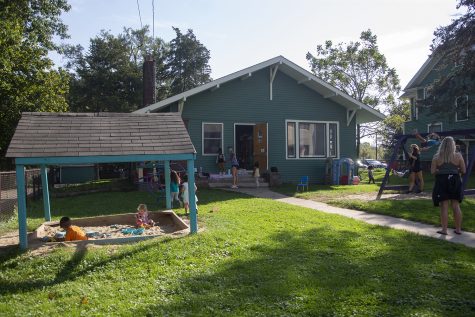
Children play outside the Melrose Day Care Center on Monday Sept. 30, 2019. The child care center hopes to have infant care in a building near campus, but are facing setbacks.
Despite these barriers, Lower said, Melrose was prepared to start caring for kids in the new building by Oct. 1.
However, she added, a surprise inspection led to a last-minute cost of $50,000 for a fire and sprinkler system. As a nonprofit, the daycare doesn’t have this kind of money on hand, Lower said. Now, the daycare is looking to the community for help with funding, she said.
With garage sales, a silent auction, a GoFundMe, and a variety of grant applications, Lower said she hopes Melrose can scrape up the money required. In the meantime, the daycare received clearance to keep three infants in their original building while their families try to find child care elsewhere.
This fix is only temporary, Lower said, and it’s been a squeeze to fit the infants in at all. With the future of the new building up in the air, rearranging spots in the existing building was the most the center could do to help the families on their waitlist.
“I know that parents need to go to work, and kids need a safe place to go,” Lower said.



